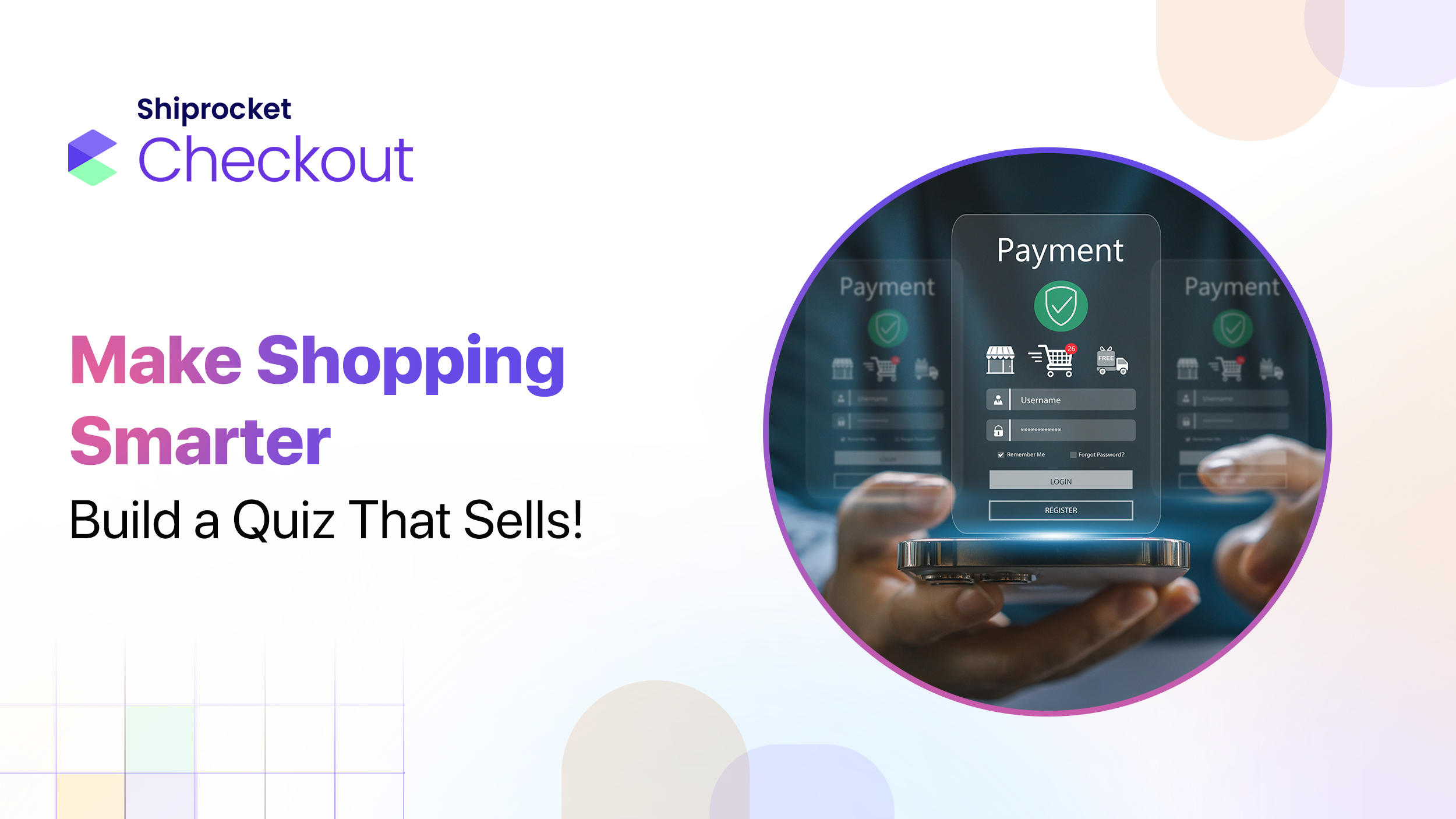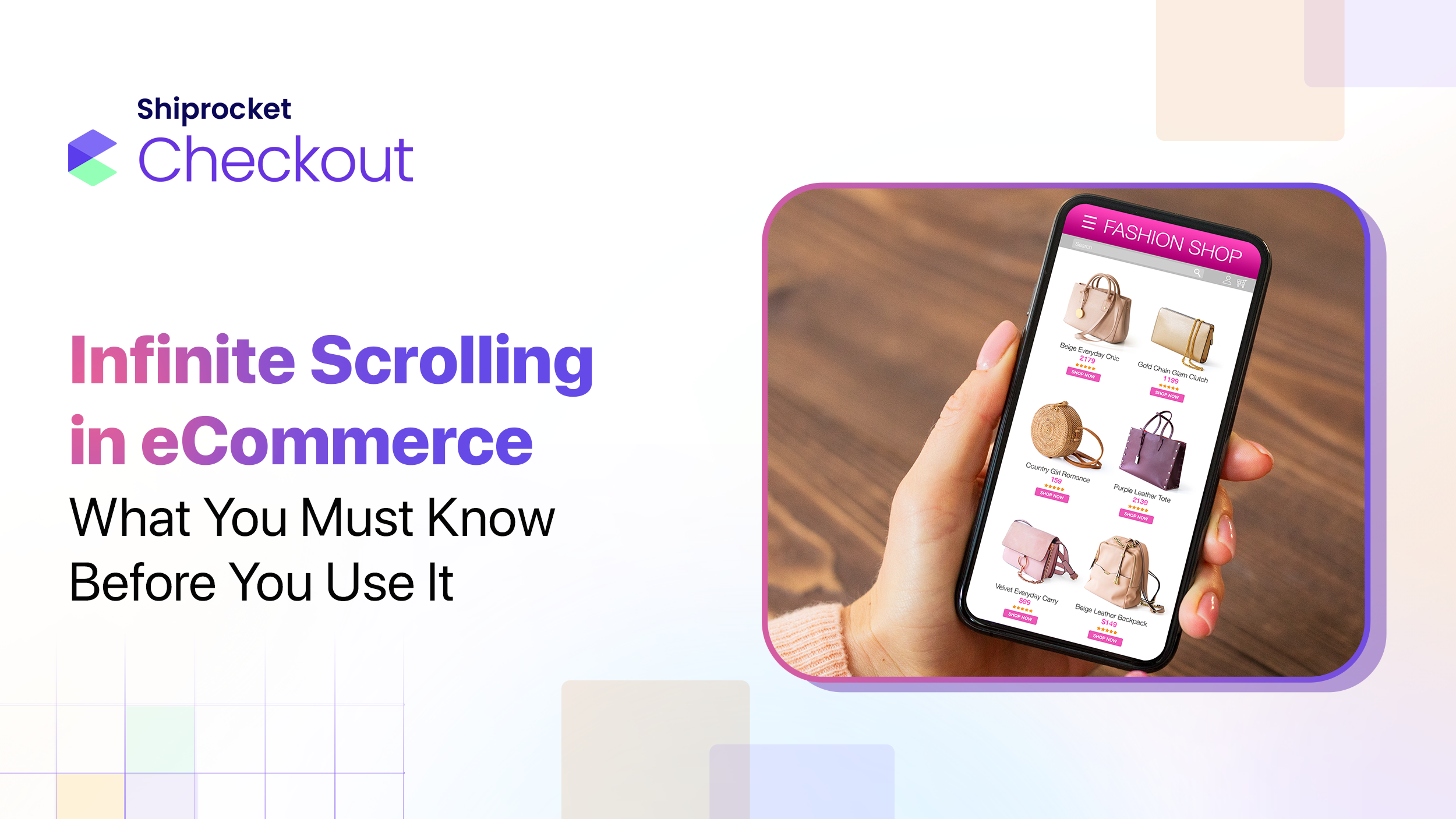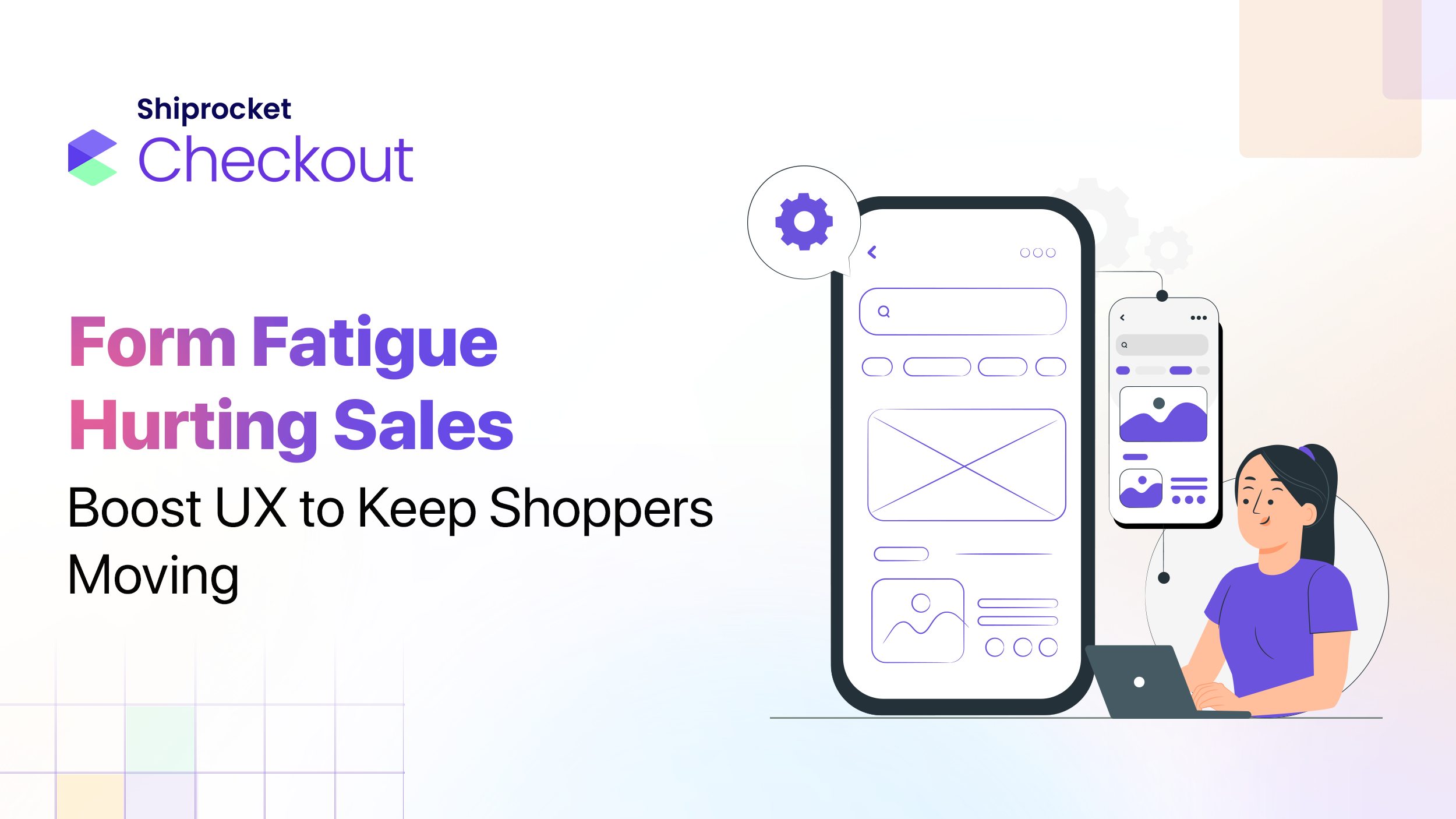Why eCommerce Apps Lose Users Between Sign-Up and Final Checkout
TL;DR
Nearly 70% of shopping carts get abandoned before checkout, often due to complicated sign-up processes and confusing checkout flows. Mandatory sign-up before browsing costs you 25% of potential customers, especially on mobile, where abandonment rates hit 85%. The solution? Keep sign-up forms short, let buyers browse first, offer guest checkout, and use one-click login options. Your checkout should be fast and clear—two steps max, no surprise fees, and mobile-optimised. Tools like Shiprocket Checkout can reduce the process to under 40 seconds. Small changes to streamline these steps can dramatically boost your conversion rates and customer loyalty.
Introduction
Getting people to visit your online store or eCommerce apps is a good start, but getting them to complete their purchases is the real goal. Many users drop off between signing up and completing checkout, which affects sales and overall performance. According to Statista, nearly 70% of shopping carts are abandoned before a purchase is completed, often because of a complicated sign-up process or a confusing checkout.
So let’s look at why many online businesses lose clients at this important moment. You’ll learn how simple changes can boost the number of successful orders and minimise drop-offs.
Is Mandatory Sign-Up Costing You Conversions?
If buyers have to sign up before placing an order, it can become a problem. Many people dislike filling out lengthy forms before viewing product details or placing an order. This can reduce your chances of getting more sales. When sign-up is made compulsory, it often leads to lower conversions. Let’s understand how.
- Long Forms Make Buyers Leave
If your sign-up form is too lengthy or requires excessive details, people may be deterred from completing it. That means fewer people complete the process and fewer people place orders.
Only 45 % of people who view a form complete it and convert successfully. That means more than half leave the process halfway. Even one or two extra fields in the form can make a big difference.
- Buyers Want to Check First, Not Sign Up First
Many buyers come to your website to see what you sell. They may not be ready to buy right away. But they might lose interest if they are forced to sign up before even looking around. Most people don’t want to give their name, email, or phone number without knowing whether they want to buy anything.
25 % of users abandon their cart when asked to create an account first. That means 1 in 4 leave if you force them to sign up. If buyers perceive the process as too difficult or not worth the effort, they will go without signing up or making a purchase.
- Mobile Users Drop Off Faster
Most users now browse using mobile phones. Typing on small screens is not very easy. Mobile users leave carts at the highest rate, approximately 85%, compared to 65-75% on desktops and tablets. They don’t want to spend time filling in details unless they are sure they want the product. So, if your site is not mobile-friendly and has a mandatory sign-up, you lose even more buyers.
- Privacy Concerns
People today are more careful about sharing their details. If your form asks for too much information, they may not feel safe unless it is clear why you are requesting that data and how it will benefit them; they will skip the sign-up and leave the site.
- Extra Steps
Every extra step reduces the likelihood that someone will complete their order. If the first thing they see is a sign-up page, many will not even reach the product or checkout page. This leads to fewer sales. When users leave without finishing the sign-up, your overall performance is affected. This can happen daily without you even noticing.
So, Is Mandatory Sign-Up Costing You Conversions?
Yes, it is. It can stop interested buyers from becoming actual customers. It can make them leave before even exploring your products. If sign-up is too early, too long, or feels unnecessary, you miss out on orders.
How to Streamline Your Sign-Up Flow?
Here is how you can improve the checkout process and streamline the sign-up flow:
- Keep It Short and Simple: The form should not feel like a task when someone wants to sign up. Simply request the basic details, such as name, email, and password. Removing just one field can increase form completion by up to 50 %.
- Let Buyers Look Around First: Buyers usually come to your website to see what you sell. They may not be ready to sign up right away. They might close the site if you ask them to register before they even check the products. Let them browse first.
- Make the Form Easy on Mobile: A lot of consumers use smartphones to shop. So the sign-up form needs to be adaptive. Ensure your app or website features large icons and a straightforward design. Navigation and buying should be simple.
- Break the Steps If Needed: If your form needs more information, you can split it into two or three parts. Start with a simple step—maybe just the email. After that, you can ask for more details.
- Use Quick Sign-Up Options: Adding options like Google or Facebook login helps a lot. These are called one-click sign-ups. People don’t have to type much. They can just click, and it’s done. This saves time and also makes many users feel more secure.
- Explain Why You Ask for Info: Sometimes, buyers don’t want to share their details. If your form requests their phone number or address, explain the purpose. For example, if it’s needed to ship their order or to send them updates.
Simplifying eCommerce Checkout to Reduce Abandonment
Checkout is the final step before a buyer places the order. But many buyers leave right at this point. They don’t always complete the order, even after adding items to the cart. One small mistake and the sale is gone.
A long or confusing checkout can change the buyer’s mind. That’s why this step has to be easy, clear, and quick. It doesn’t have to be fancy. It just needs to work smoothly from start to end.
Here are a few things that help:
- Reduce the Steps: If the checkout has too many steps, it feels like a task. Two quick steps are enough in most cases.
- Use Clear Call-to-Actions: The buyer should know exactly where to click next. They may close the page if they can’t find the ‘Pay Now’ or ‘Place Order’ button easily.
- Avoid Last-Minute Surprises: If the price suddenly changes because of extra charges or delivery fees, it breaks trust. Always show the final cost before the last step.
- Offer Guest Checkout: Some buyers simply want to place their order quickly. If they are forced to create an account first, they may leave.
- Save Cart Content: If the buyer closes the page and returns later, the cart should retain its items. It saves time and prevents them from having to start all over again.
- Enable Auto-fill: Returning users appreciate saved addresses or payment details. It speeds up the process and makes checkout feel effortless.
Checkout should be a quick last step, not a challenge. Buyers will complete the order without hesitation, given that it’s easy and clear. They feel good about the experience and are more likely to return. A few small changes here can help you get more confirmed orders.
Unlock Higher Conversion Rates with Shiprocket Checkout Tools
Many buyers leave without completing their order because the checkout process feels too long or confusing. Shiprocket Checkout helps reduce drop-offs by making the buying process quick and simple. Many customers leave without completing their purchase when the checkout feels slow or complicated. This tool solves that problem with a one-click checkout that takes less than 40 seconds to complete. It eliminates unnecessary steps and enables buyers to complete their orders efficiently.
It is also designed to work seamlessly on mobile devices. Since most buyers now shop on their phones, this makes the process easier and more convenient. Shiprocket Checkout helps reduce common issues, such as incorrect addresses, which often lead to failed deliveries.
People don’t drop off in the middle when the checkout is fast. That means more orders get placed. Shiprocket Checkout is easy to use and offers a better shopping experience for buyers. Another benefit is that it reduces return orders and increases conversions for sellers. It’s a small change, but it has a significant impact on the overall smoothness of everything.
Conclusion
Checkout is not just the final step; it is the deciding point for your sale. A well-designed checkout boosts sales. Even a minor adjustment can have a lasting impact on applications for eCommerce platforms. It not only facilitates the completion of the current purchase but also promotes new purchases. Shoppers are more likely to stay loyal when their purchase goes smoothly.
Prioritising a good checkout experience is one of the simplest ways to boost loyalty and revenue, one completed order at a time.



